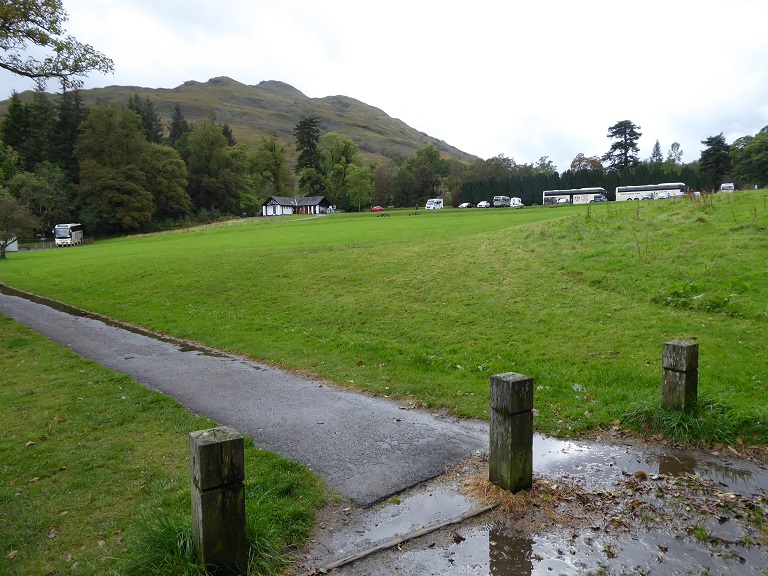
Introduction
In a previous post (see here) I commented how the inaction of the Loch Lomond and Trossachs National Park (LLTNP) on helping define the route of the A82 between Tarbet and Inverarnan was worrying. There appeared to be an unwillingness on the part of the LLTNP to do anything positive to ensure appropriate use of this huge public investment by Transport Scotland in the Park to improve outdoor recreation and cycling in particular.
Generally what appears to be happening is that the Park issues “plans”, specifically the National Park Partnership Plan and the now defunct Outdoor Recreation Plan (ORP), that are full of platitudes like Net Zero, Active Travel and Public Transport and then proceeds to ignore them when it comes to actual actions. There are, to be sure, multiple reasons for inaction, not least financing, but the overall impression is a retreat from actually making things better, to poorly constructed control measures such as the Camping Permit scheme and the Navigation by-laws.
In the last Outdoor Recreation Plan (2013-17) of the Loch Lomond Park, Tarbet was rightly identified as of critical importance. Specifically it provides easy access for water sports and potentially a hub for cycling. It is also, potentially, an area for low impact camping by youth groups. In 2019 Moulsdale Properties came up with a “Tarbet Master Plan” that ignored the interests of Kayakers, Cyclists, Walkers and Campers in favour of Self-Catering Accommodation and a Marina (see here) . Central to this Master Plan was the Car Park and South Pier publicly owned area.
Rebuilding the car park and providing better services for tourists, both going on the boats or simply picnicking, is undoubtedly required. As a result these two actions, both arguably commercial, were combined by the LLTNP and are now being promoted in a planning application, on which you can comment (see here), as a Tarbet Master Plan. Despite the fine words in the Park Plans, the LLTNP appear to have ignored the interests of the paddling community, cyclists, walkers and youth organisations in this application; all of whom have a stake in what happens at Tarbet. Significant changes need to be made to the plan to incorporate these interests.
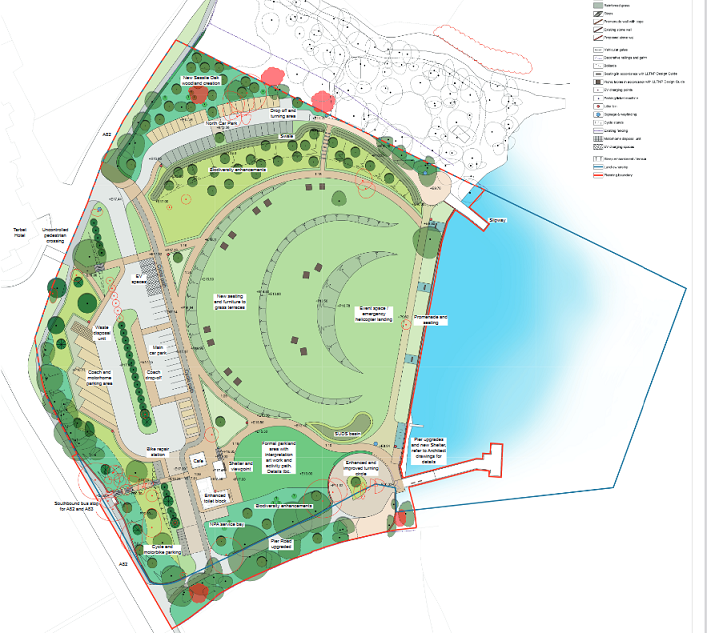
Paddle Sports
To quote the ORP:
Loch Lomond – central and north The spectacular waters of Loch Lomond are a fantastic resource for canoeing and kayaking.. Loch Lomond is the largest body of freshwater in mainland Britain and can be most easily accessed from the east side from Milarrochy Bay, Sallochy car park or Rowardennan; from the west side at Luss public car park, Tarbet car park and Inveruglas; or from the south at Balloch either from Duncan Mills Memorial Slipway or Duck Bay.
ORP Action 32: Network of fit for purpose access and egress points throughout Loch Lomond.
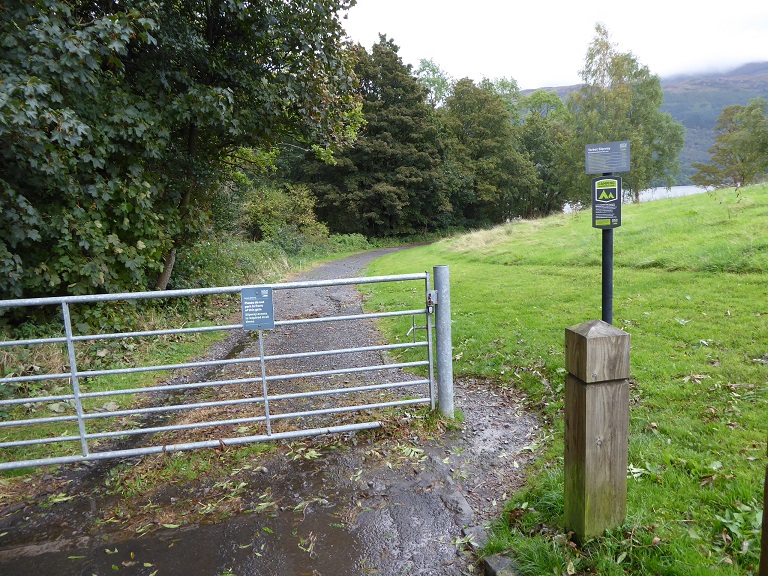
“The locked gate and road leading to the slipway”
Currently canoes/kayaks have to be carried down a track past a gate locked by the Park Authority to a small beach by the northern pier. Cars are parked just above the gate.
A far better solution is to extend the beach area and open up the track to allow loading/unloading alongside the extended beach. Parking should be in a reserved area at its current position. This would fit in with ORP Action 32.
Cycling
Currently entry to Tarbet from the south is by a narrow roadside pavement, not shown on the existing plan of the site as it is and part of the misnamed West Loch Lomond Cycleway. The route then weaves through the car park and along the A82 before crossing this trunk road and proceeding on another pavement to its terminus at Arrochar and Tarbet Station.
Tarbet is also the ferry point for crossing to Inversnaid and the Great Trossachs Cycle Path. A charge of £2 is made to transport cycles. ORP TS Actions 43 and 44 requires the Authority to involve transport, land and water operators, where appropriate to facilitate cycle journeys and products.
The extension of the cycle path north along the shore, built to Sustrans Design Standards, has been agreed by all and endorsed by the minister. To review these standards; the cycle path will be a minimum of 2.5m wide with a minimum 2.5m verge when alongside the road. If the path needs to cross a trunk road then cyclists will have to be protected by traffic lights or equivalent.
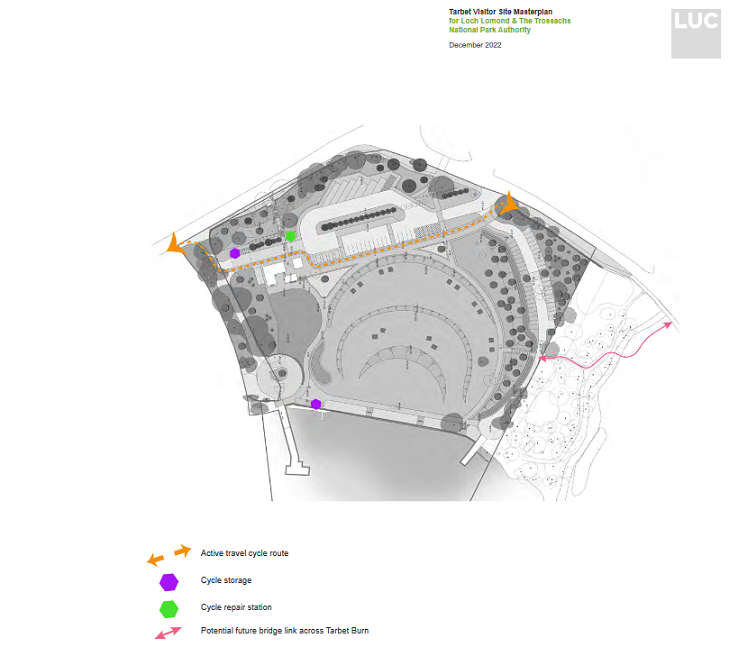
The “Master Plan” appears to ignore these standards. The specified cycle is actually footpath width (2m) not cycle path width and appears to continue at this width (or less), without a verge, north along the A82. This is completely unacceptable.
Where the cycle path crosses roads within the site and then the A82, before it follows the A83 up the hill to the station, there is neither protection nor indication that cyclists have precedence over motor vehicles. It appears the designers are unaware of government policy. Improving this route is a priority.
Camping and Motor Homes
Very few observers of the Camping Permit Scheme would regard it as an unmitigated success. The quite understandable wish to put some limits on roadside camping has not been accompanied with the network of minimum facility camp sites promised and roadside camping has in practice expanded dramatically with the growth of campervan activity.
Four observations I have made:
- The kayak launch site at the north end of Inveruglas Car Park has been assumed by at least one individual as “reserved for campervans” rather than as an access point for kayaks on the Loch
- The main beach at Firkin Point in the permit area was at one time, occupied by a large family frame tent
- A group of teenage Spanish Scouts travelling south could find nowhere to camp.
- As many as 30 Campervans have occupied the Tarbet parking area one evening.
The reservation of a section of the car park in the masterplan for 4 Campervans is both inappropriate and inadequate and the decision to locate the much needed waste disposal facility at the Tarbet car park now appears a mistake.
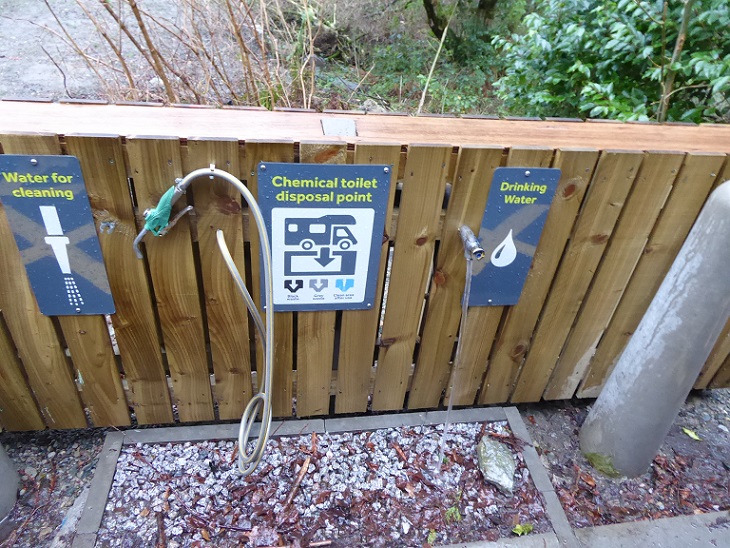
The Park Authority should be looking to set up a minimum facility site for at least 20 vans and 20 family tents nearby. A suggested location is close to the station. Campervans should be encouraged not to overnight in lay-bys etc where there are no waste disposal facilities.
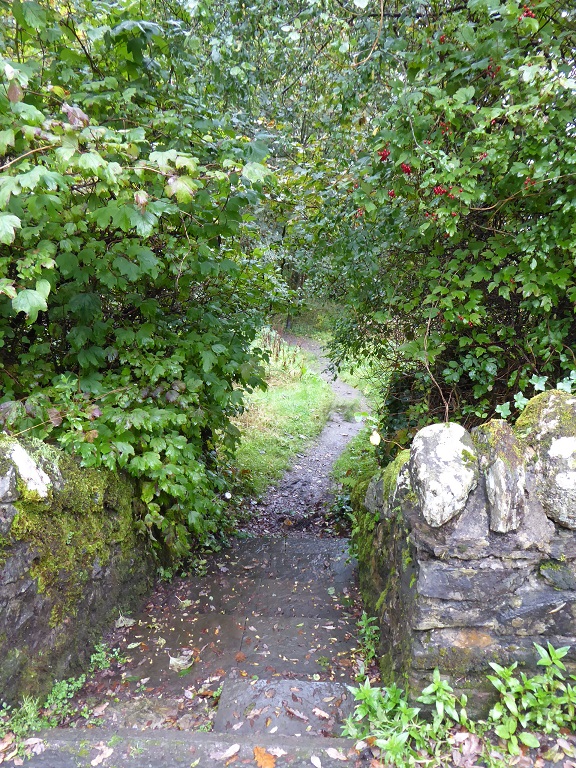
If possible a minimum facility youth site in the woodland to the north of the car park, which now appears owned by Moulsdale Properties, should be constructed. This would provide an overnight destination for kayakers/canoeists, cyclists, walkers (on the Three Lochs Way) and tourists. This should be part of the Master Plan.
Walkers and Public Transport
Improvement and way-marking of routes between the station, the pier and the Three Lochs Way (a mere 200m from the pier) is central to meeting the aims of the Park Plan to integrate and expand the use of Public Transport. While there is a shortage section on signage and way-marking in the Design Statement accompanying the application, it is about signing facilities within the site, not external connections and suggests there needs to be a “design strategy “ for signage. Improving the walking routes should be as important as resurfacing a car park.
Conclusion
The “Master Plan” for Tarbet provides little more than an improved parking area for those using tourist boats and an improved café facility. Both of these are needed but it is difficult to identify why the Park Authority is effectively committing public money to help commercial enterprises without also providing for the wider outdoor recreational interest. A similar comment applies to Campervans; why is the public paying to help a limited number of individuals avoid camp site fees?
The planning application is not a Master Plan but one is required. It should not be promoted as such unless it is integral to the Park Plan commitments to prioritise Active Travel, Water Sports, Youth activity and Public Transport.

“why is the public paying to help a limited number of individuals avoid camp site fees?”
Because those individuals are also “the public” who pay into the system in a number of ways. We all pay for things we don’t use and don’t want along with hopefully a few that we do, that’s how it works.
Why is the public paying millions to ensure that a limited number of individuals can ride a bike, that’s fine but a few thousands for campervan facilities isn’t?
Anyway most campervanners would welcome disposal points at a reasonable charge, try suggesting that cyclists should pay for anything! Just look at the articles on this blog about FLS campsites to see how much money is extracted from campers.
The investment by the LLNPA to employ teams of design consultants and mega-bucks in some misguided effort to re-landscape “parkify” this small feature within the national Park must be called into question.
For years this public area was a wise place to pull into and rest. Surely taking a break is an important thing for many holidaying road users, as they explore? To pause before negotiating the intricate road that leads away from the central lowlands ? Coming south, a rest after a long risky road journey along decaying roads (A82, A 83) to reach it from places further north and west. This National road safety aspect should never be overlooked in the park authority’s obsession with”profit”?
Yet, in my A82 experience – spanning some 7 decades now – many years have elapsed since the toilets were kept fully operational. They are frequently locked. The former cafe, ice cream outlet and tea room, historically so popular, has for a decade now never been operational. Nor has any franchise been encouraged.. (This total negativity by the Park Authority started years ago…well before Covid) .
Today the passing visitor is confronted by warnings about ANPR /CCTV. Boards display obscene parking charges, said to be enforced by patrols. Barricades and a barrier lower down restricts public access for wheel chair users etc to the Loch shore. Persons who innocently dare tread in the grassed areas, frequented by dog owners also, will do so at their peril. The detritus that lurks behind lochside bushes screened from the parking area with lack of public toilet facilities nearby, merits little description.
In Scotland the standard for Public accounting continue to tumble. Audit Scotland are supposed to have this role. They fail. Actual accountability of Local officials for finance disbursed is almost never pursued. If this state of affairs was to occur in a City park, far greater fuss would result.
The last thing the shoreside of Loch Lomond needs now is a huge earthworks to begin here right through the upcoming season to “sanitize” natural elements , and form an urban designer dream park. All that is required from the LLTNPA officers is their full attention to offering the proper facilities – a cheerful cafe to generate funds for toilets and to help fund a part volunteer local maintenance crew – level parking, and a few benches. Open it up, make it a pleasant place to be and at which to enjoy a gentle lochside wander again. People do care about public space. This is theirs after all.